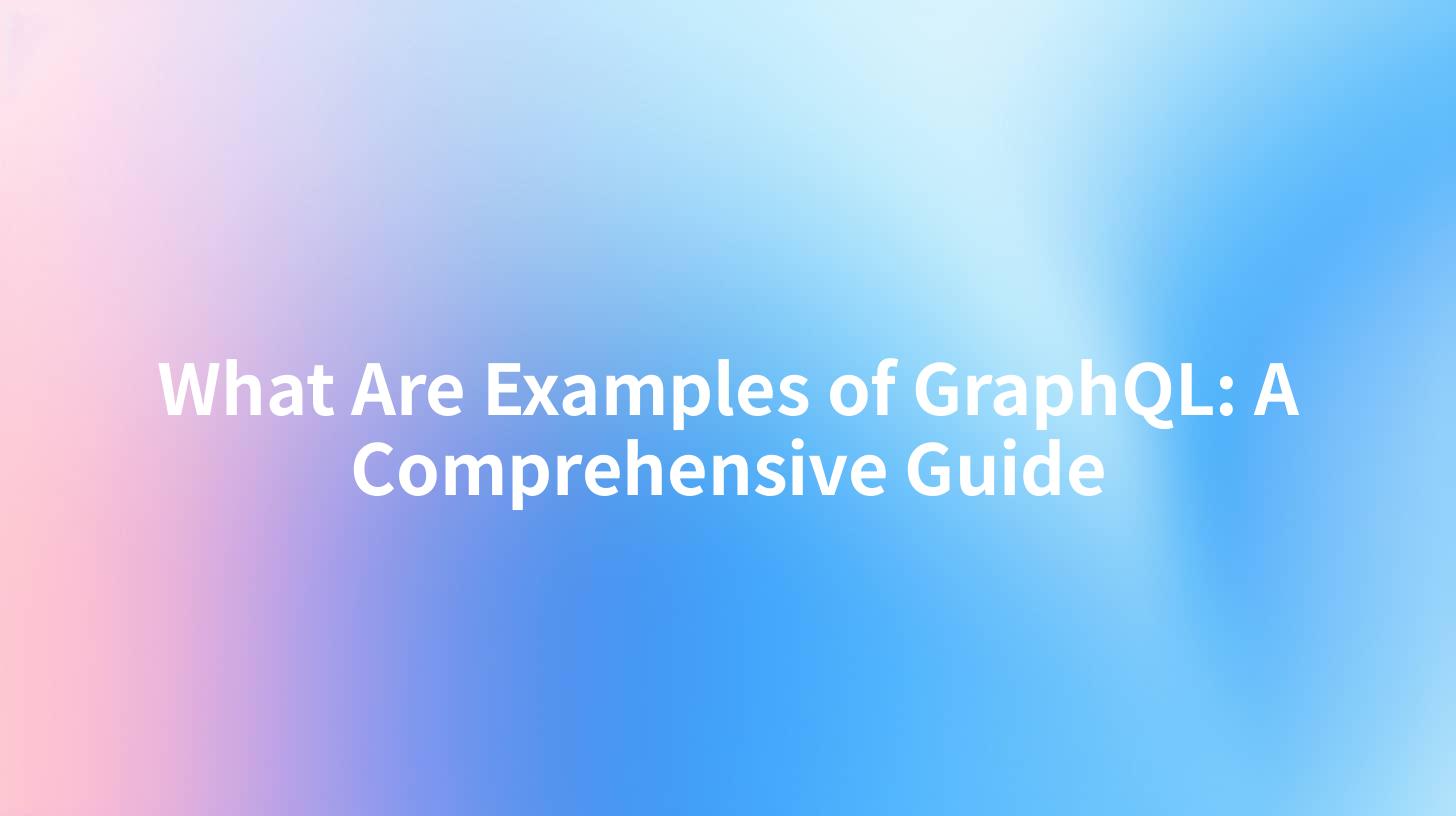What Are Examples of GraphQL: A Comprehensive Guide

What Are Examples of GraphQL: A Comprehensive Guide
GraphQL has emerged as a powerful alternative to traditional REST APIs, offering more flexibility and efficiency in data querying. This guide aims to provide comprehensive examples of GraphQL, examining its features and advantages, along with best practices for secure implementations, particularly in the context of AI services.
Understanding GraphQL
GraphQL is a query language for APIs and a runtime for executing those queries with your existing data. It was developed by Facebook in 2012 and has since gained popularity due to its efficiency in data fetching. Unlike REST, where clients must make multiple requests to fetch related data, GraphQL allows clients to request exactly what they need in a single query.
Key Features of GraphQL
- Declarative Data Fetching: Clients can specify the shape and structure of the data they need.
- Single Endpoint: All requests are routed through a single HTTP endpoint, simplifying network requests.
- Strongly Typed Schema: GraphQL APIs are described by a schema that specifies the types of data that can be fetched.
- Real-time Capabilities: With subscriptions, clients can receive real-time updates whenever the data changes.
What Are Examples of GraphQL
In this section, we will explore various examples of GraphQL in action. We'll cover the basic setup, queries, mutations, subscriptions, and how to integrate GraphQL with AI services while ensuring enterprise-grade security.
Example 1: Basic Query
Here's a basic example of a GraphQL query to fetch data about users:
query {
users {
id
name
email
}
}
This query requests a list of users, specifically retrieving their id, name, and email.
Example 2: Filtering Data
GraphQL also supports arguments that allow you to filter the data you receive. Here’s an example of querying users by their ID:
query {
user(id: "1") {
name
email
}
}
Example 3: Mutations for Data Modification
Mutations are used to modify server-side data. Here’s an example mutation that creates a new user:
mutation {
createUser(name: "John Doe", email: "john@example.com") {
id
name
}
}
Example 4: Subscriptions for Real-time Updates
GraphQL subscriptions enable real-time updates. Below is an example of subscribing to user updates:
subscription {
userUpdated {
id
name
}
}
Implementing GraphQL with AI Services
Integrating GraphQL with AI services leverages powerful data management and facilitates real-time interaction with AI functionalities. APIPark is a platform that can help streamline this integration.
AI Gateway Example
To set up an AI service with GraphQL, you can employ the AI Gateway. Here’s a simplified example of how you can use GraphQL queries to interact with an AI service.
query {
aiService {
processInput(input: "What are examples of GraphQL?") {
response
}
}
}
In this example, we’re querying an AI service that processes an input string and returns a response.
Security Considerations
Securing your AI services while leveraging GraphQL is crucial, especially for enterprises looking to utilize AI within their operations. Here are some security practices to consider:
- Basic Auth: A simple authentication method where users provide a username and password.
- AKSK (Access Key and Secret Key): A secure method utilizing a key pair to authenticate users.
- JWT (JSON Web Tokens): Enables secure transmission of information as a JSON object which can be verified and trusted.
Security Best Practices for GraphQL
Here are some additional practices to ensure enterprise security while using GraphQL in conjunction with AI services:
| Security Feature | Description |
|---|---|
| Rate Limiting | Limit the number of queries a client can execute to prevent abuse. |
| Depth Limiting | Prevent excessively deep queries which can overload the server. |
| Query Whitelisting | Only allow predefined queries to run on your server for added security. |
| Input Validation | Sanitize input data to prevent malicious queries. |
APIPark is a high-performance AI gateway that allows you to securely access the most comprehensive LLM APIs globally on the APIPark platform, including OpenAI, Anthropic, Mistral, Llama2, Google Gemini, and more.Try APIPark now! 👇👇👇
Conclusion
GraphQL has opened new avenues for data retrieval and manipulation, making it an excellent choice for modern API development. By employing GraphQL alongside AI services, organizations can achieve efficient data management while enabling real-time interactions.
To summarize, the major aspects you should keep in mind include:
- Understand the core features and benefits of GraphQL.
- Explore practical examples and applications in different scenarios.
- Prioritize security by using authentication methods like Basic Auth, AKSK, and JWT when integrating AI services.
This guide aims to equip you with the foundational knowledge and examples necessary to effectively use GraphQL in your organization. Whether you're a developer, system architect, or decision-maker in an enterprise, GraphQL offers compelling advantages and capabilities to elevate your data management approach.
References
- Official GraphQL documentation: GraphQL
- APIPark documentation: APIPark
- AI Gateway configurations and examples from APIPark documentation.
With these insights into what GraphQL is and its application examples, you're now better positioned to leverage this powerful technology in your projects while ensuring a secure and reliable implementation.
🚀You can securely and efficiently call the Anthropic API on APIPark in just two steps:
Step 1: Deploy the APIPark AI gateway in 5 minutes.
APIPark is developed based on Golang, offering strong product performance and low development and maintenance costs. You can deploy APIPark with a single command line.
curl -sSO https://download.apipark.com/install/quick-start.sh; bash quick-start.sh

In my experience, you can see the successful deployment interface within 5 to 10 minutes. Then, you can log in to APIPark using your account.

Step 2: Call the Anthropic API.


